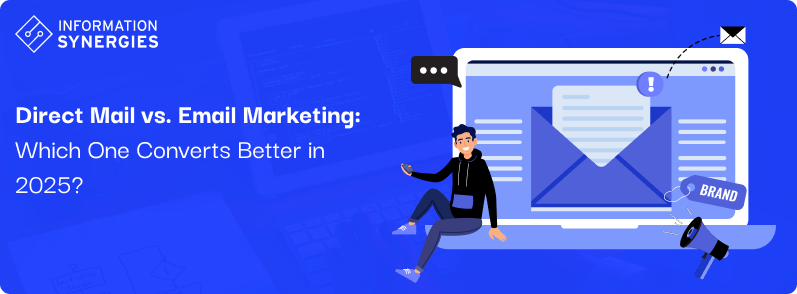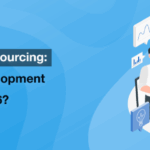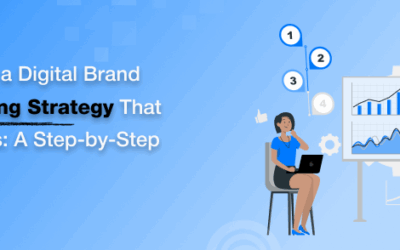
2025 marketing is more competitive and data-driven than ever. Companies have a provocative question to pose in campaign planning: Direct Mail or Email Marketing 2025 — which performs better?
While email remains the backbone of digital outreach, direct mail has made a surprising comeback. Both channels offer unique advantages, and the best choice depends on your goals, audience, and budget. In this blog, we’ll explore how each method performs, compare their conversion rates, and share best practices for achieving the highest ROI in today’s marketplace.
Why This Question Matters in 2025
Conversions are the lifeblood of any marketing campaign. Whether you’re running a small business or a national brand, the goal is the same: turning prospects into paying customers. As email marketing providers add advanced automation and personalization tools, and direct mail campaigns evolve with QR codes and digital integration, businesses must decide which medium to prioritize.
For companies looking for the best digital marketing solution, knowing where these channels differ is essential.
The Worth of Direct Mail in 2025
A lot of people think that direct mail is obsolete, but the figures say otherwise. Direct mail has really been more robust than one would have expected in a more digitized world.
- Open rates for direct mail: Research has indicated that 80–90% of the recipients will at least glance at their paper correspondence, whereas email open rates are about 20–30%.
- Response rates: Average response rate for direct mail campaigns is 4–9%, whereas response rates via email are a few tenths of one percent.
- Trust and tangibility: People tend to find physical mail more credible than the internet. A well-written postcard or brochure makes an impression, lying on a desk or fridge for days on end.
Direct mail in 2025 is also more measurable than ever. With QR codes, personalized URLs, and campaign integration software, marketers are able to see exactly how direct mail is driving web traffic and conversions. For companies that depend on professional digital marketing solutions, direct mail can be a valuable complement to digital campaigns.
The Strengths of Email Marketing in 2025
Although direct mail does have its applications, email marketing still provides unparalleled scalability and ROI. Email returns $36–$50 for each $1 spent, which is among the cheapest marketing mediums to engage with, according to industry standards.
Here’s why email still stands strong:
- Cost efficiency: It only takes pennies to send an email compared to print and postage.
- Speed: Emails can be sent to a thousand people in seconds, making it the best choice for urgent offers.
- Personalization: Next-generation email marketing software uses AI to personalize subject lines, product offers, and messages based on individual customer behavior.
- Measurability: That quick tweak in campaigns becomes possible because of real-time tracking of open rates, click-throughs, and conversions.
For companies that are expanding, email is the foundation of any digital marketing strategy.
Direct Mail vs Email Marketing 2025: Head-to-Head Comparison
Let’s dive in and have a clearer view of how the two compare head-to-head:
- Open Rates: Direct Mail ~80–90% vs. Email ~20–30%
- Response Rates: Direct Mail 4–9% vs. Email ~0.1–0.3%
- ROI: Direct Mail’s highest return is 112%, with Email producing 36–50x ROI
- Longevity: Direct Mail is there for days or weeks in a home, whereas Emails tend to get deleted within hours
- Cost: Direct Mail is more expensive per campaign but less expensive and less scalable through Email
The comparison indicates why marketers cannot call one winner. Both channels are best at distinct objectives.
Why Direct Mail Delivers Stronger Conversions
For deep engagement, nothing beats direct mail. Neuromarketing research reveals that paper-based mail engages higher numbers of brain areas associated with memory and emotional response than digital media. Customers have a higher chance of trusting an offer that is presented via paper-based media.
Direct mail provokes feelings of prestige, particularly when sent to the individual. It is easily passed around from household to household, which allows it to travel past the original recipient. This is particularly beneficial in real estate, healthcare, and local services markets.
Information Synergies LLC even suggests using direct mail for high-value promotions or campaigns directed at smaller, high-potential audiences where trust is paramount.
Why Email Still Converts Effectively
Conversely, mail can’t be topped for scale or immediacy. Marketers can mail thousands of prospects pre-programmed sequences at little expense, leading them through a sales funnel.
A well-written subject line can increase open rates by as much as 20%, and segmentation gets the right messages into the right people’s hands. And most of all, email enables real-time testing—marketers can test subject lines, CTAs, and design, and then flip for improved performance.
For companies that appreciate efficiency, speed, and analytics, email is usually the better option. Most of the top digital marketing service agencies rely heavily on email campaigns precisely for these reasons.
Synergies: When Direct Mail and Email Work Best Together
Instead of opting for either one of them, the best way in 2025 is a combination of direct mail and email. Studies reveal that campaigns utilizing both means combined are able to boost response rates by up to 40%.
For example:
- The company sends a postcard with a QR code, which takes the recipient to a landing page.
- A follow-up email is then sent to the recipients after a week, reminding them of the offer.
- The direct mail establishes credibility and focus, and the email supports the message with an immediate click-to-buy functionality.
This cross-channel strategy achieves the highest engagement, recall, and conversions. Information Synergies LLC and other agencies generally recommend that companies use multichannel strategies for improved ROI.
Best Practices for 2025 Campaigns
Whether you use direct mail, email, or both, here are some tips that can be employed to drive conversions:
- Personalize content: Employ names, purchase history, or location to create addressed offers.
- Utilize straightforward CTAs: Make sure every email or mailer directs customers toward one simple action.
- Leverage trackability: QR codes, personal discount coupons, and trackable URLs close the offline mail to online performance.
- Segment your audience: Divide customers into segments (longtime clients vs. new prospects) and message them accordingly.
- Time your campaigns strategically: Mid-weekday direct mailings and weekday morning emails tend to perform best.
Having a pre-existing email marketing provider or full-service agency can make these easier and ensure competent execution.
Read More: Why Digital Marketing is Important for Your Business Growth
Conclusion & Recommendations
So who performs better in 2025 — Direct Mail or Email Marketing
- Direct Mail wins on engagement, trust, and long-term impact.
- Email Marketing wins on scalability, cost-efficiency, and speed.
- The true winner is a blended strategy, where both channels complement each other for maximum ROI.
Businesses that rely on experienced and professional digital marketing service providers can combine these strategies seamlessly, delivering enhanced performance through campaigns.
Ready to Boost Your Conversions?
Direct mail and email have a role in marketing today as well. If you’re not sure if one or the other is best for your company, Information Synergies LLC is at your service. Our experts create conversion-oriented campaigns that blend old-school and online marketing to maximize ROI.
Call on us today for a consultation and discover how we can assist you in making the best choice for increased conversions in 2025.








